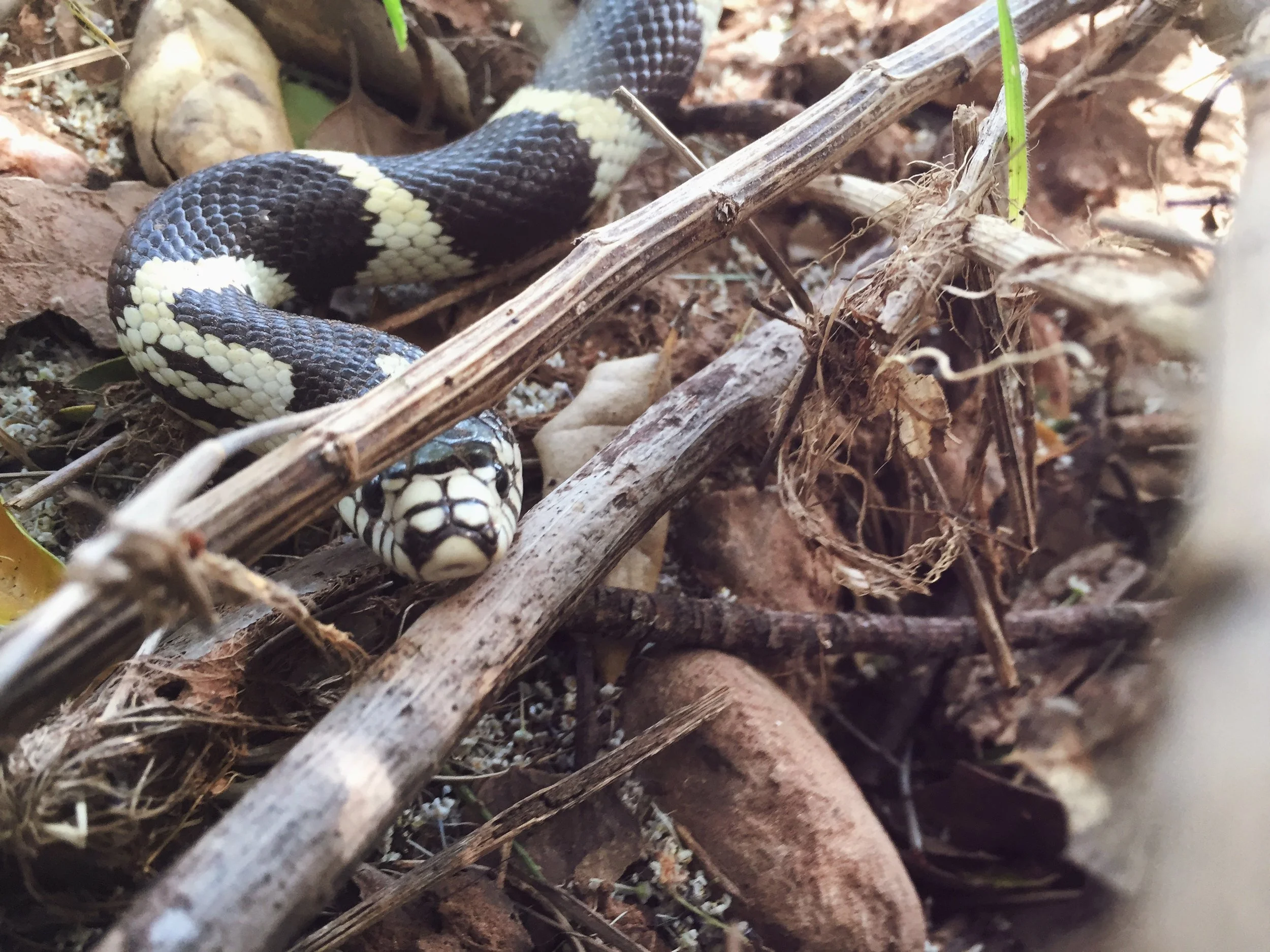California king snake (Lampropeltis californiae)
Whispers of scales sliver through wildflower duff, like a knitting pin through soft alpaca wool. Weaving between woodlands, thickets of shrubs and across open grasslands, the California kingsnake embodies transformation and persistence. Characterized by an absence of hind limbs, a reduced left lung, and lack of premaxilla teeth, colubrids such as the California kingsnake move around open areas between large shrubs and grasses, hunting for small mammals like rodents, amphibians such as frogs and even other snakes, including rattlesnakes. They are an indicator species of ecological stability and their presence is reflective of a healthy diversity of ecotones, or mixed habitat types. You might find them in Wills and Rice canyons, where a large variance in canopy cover occurs.
What is the story of snakes and how did they become such an integral part of our ecosystems today? It is in the late Eocene, around 35 million years ago, when colubrids first appear in the fossil record after mammals and reptiles were able to diversify and occupy new niches within ecosystems. Terrains became variegated as uplift sparked throughout California, facilitating speciation. These early colubrids likely enjoyed the vast prairies that became dominant in the Oligocene epoch, when grasses began to proliferate into large meadows. More recently, as local flora and fauna transitioned once again, mixed conifer and pine forests retreated from the lowlands and coastal sage scrub and chaparral proliferated. Alongside the incredibly dynamic stewardship of oak woodlands and grasslands by indigenous groups throughout California, biodiversity flourished. This mosaic of ecotones facilitated the arrival and abundance of the California kingsnake throughout the California Floristic Province.
Martin Schenker, Restoration Field Crew Manager

